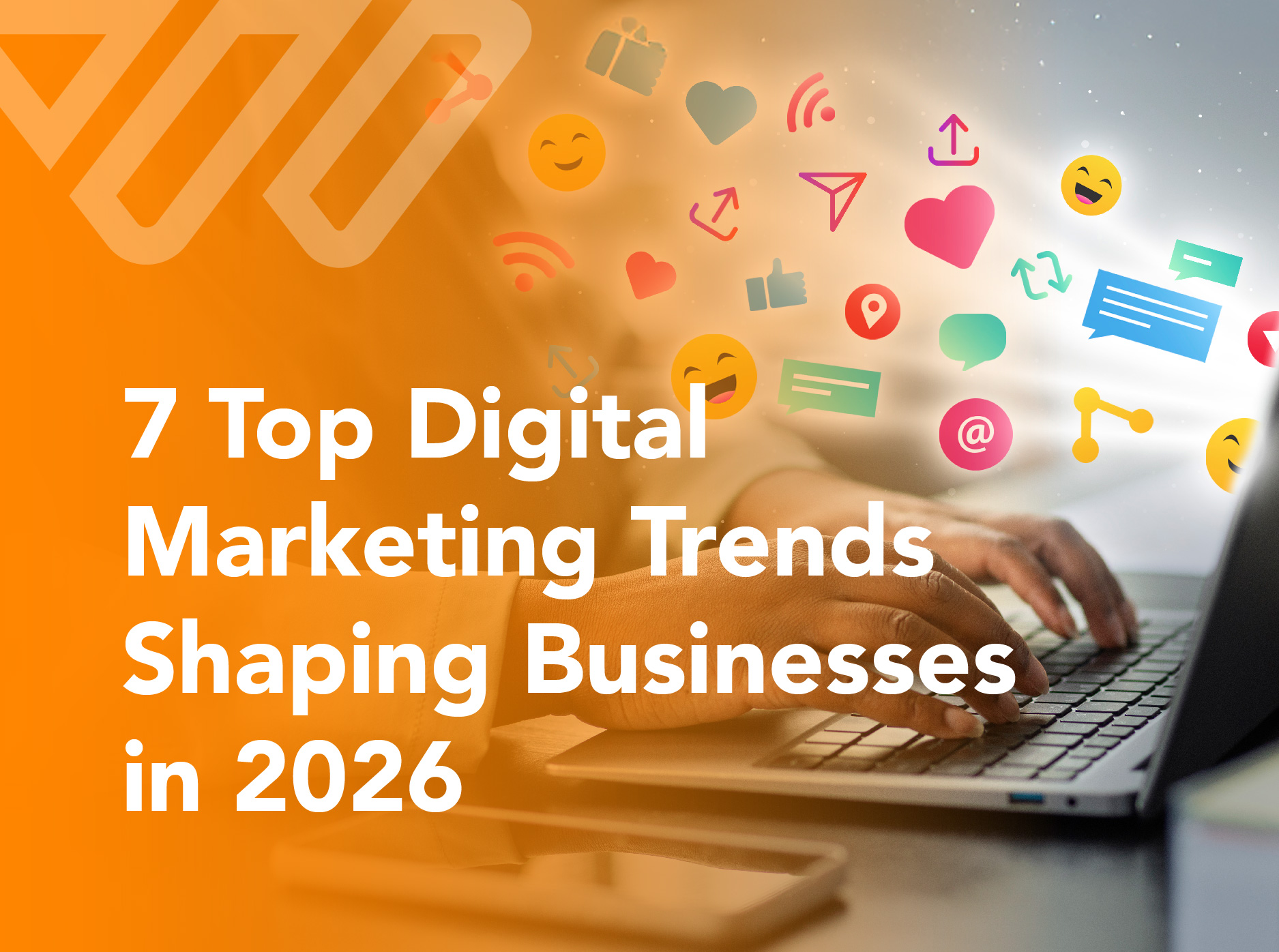7 Top Digital Marketing Trends Shaping Businesses in 2026

In 2026, digital trends like AI-powered personalization, short-form video, and purpose-driven marketing will dominate. Businesses who adapt now will gain more engagement and customer loyalty.
As consumer behaviors shift and technology advances, companies across Malaysia and South East Asia are reimagining their digital marketing strategies to capture attention, drive engagement, and deliver meaningful results. Understanding these trends isn’t just about staying current. It’s about positioning your business for sustained growth in an increasingly digital-first world.
In this article, we will talk about top digital marketing trends shaping businesses in 2026:
1. AI-Powered Personalization
Artificial intelligence has revolutionized how brands deliver personalized experiences to their customers. In 2026, AI-powered personalization goes beyond just product recommendations. It also creates hyper-targeted content that adapts in real-time based on user behavior, preferences, and interaction patterns.
Global brands like Netflix have mastered this approach. They use AI to personalize everything from content recommendations to thumbnail images based on individual viewing habits. Grab, Southeast Asia’s super app, uses AI to personalize everything from food recommendations to ride suggestions based on user behavior, location patterns, and preferences. Their AI-driven personalization has contributed to maintaining market leadership across Malaysia and Singapore’s competitive ride-hailing and food delivery markets.
2. Short-Form Video Dominance
The rise of platforms like TikTok, Instagram Reels, and YouTube Shorts has fundamentally changed content consumption patterns. Short-form video content now dominates social media feeds, with users spending an average of 52 minutes daily watching videos under 60 seconds.
Brands like McDonald’s Malaysia have leveraged TikTok and Instagram Reels to create viral content showcasing local menu items like the Prosperity Burger during Chinese New Year, generating millions of views across Southeast Asia. Shopee, the region’s leading e-commerce platform, has mastered short-form video marketing through their in-app videos and social media campaigns, driving significant user engagement and sales conversions across Malaysia and Singapore.
3. Interactive Content
Static content is becoming increasingly ineffective in capturing and maintaining audience attention. Interactive content including polls, quizzes, AR filters, and interactive infographics has proven to generate 2x more engagement than traditional static posts.
Companies like Sephora have successfully implemented virtual try-on experiences that allow customers to test makeup products using AR technology, resulting in higher conversion rates and reduced return rates. Zalora, Southeast Asia’s leading fashion e-commerce platform, has integrated interactive size guides, virtual styling tools, and real-time chat features that have significantly improved customer engagement and reduced return rates across their Malaysia and Singapore operations.
4. Omnichannel Marketing
The lines between online and offline experiences continue to blur as consumers expect seamless interactions across all touchpoints. Omnichannel marketing ensures consistent messaging and experience whether customers interact via social media, email, mobile apps, or in-store visits.
Disney exemplifies omnichannel excellence by creating integrated experiences that span theme parks, streaming services, mobile apps, and retail stores. Each touchpoint reinforces the brand narrative while providing unique value. DBS Bank has mastered omnichannel banking across Singapore and Malaysia, seamlessly integrating their mobile app, online banking, physical branches, and customer service channels to provide consistent experiences regardless of how customers choose to interact with the bank.
5. Sustainability and Purpose-Driven Digital Marketing
Modern consumers, particularly millennials and Gen Z, increasingly support brands that demonstrate genuine commitment to social and environmental causes. Purpose-driven marketing has shifted from nice-to-have to essential for building authentic connections with conscious consumers.
Patagonia has built their entire brand identity around environmental activism, creating marketing campaigns that prioritize purpose over profit. This approach has cultivated an incredibly loyal customer base willing to pay premium prices for products that align with their values. Gojek has consistently positioned itself as a platform that empowers local communities and small businesses across Southeast Asia, creating purpose-driven campaigns that highlight their social impact while building strong emotional connections with users in Malaysia and Singapore.
6. Augmented Reality (AR) and Virtual Reality (VR)
AR and VR technologies are transforming how customers interact with brands and products before making purchase decisions. These immersive experiences reduce uncertainty and increase confidence in online purchases.
IKEA’s AR app allows customers to visualize furniture in their homes before buying, significantly reducing return rates and improving customer satisfaction. PropertyGuru, Southeast Asia’s leading property platform, has implemented VR property tours and AR visualization tools that allow potential buyers and renters to experience properties remotely, revolutionizing the real estate experience across Malaysia and Singapore during and beyond the pandemic era.
7. Micro-Influencer Marketing Evolution
The influencer marketing landscape has matured beyond celebrity endorsements to focus on micro-influencers with smaller, highly engaged audiences. These partnerships often generate better ROI due to higher trust levels and more authentic connections with niche audiences.
Love, Bonito, Singapore’s homegrown fashion brand, built their success through strategic partnerships with local micro-influencers and customer advocates, creating an authentic community that drove their expansion across Southeast Asia. Charles & Keith has effectively leveraged micro-influencers across Instagram and TikTok in Malaysia and Singapore, working with local fashion enthusiasts who create authentic content that resonates more deeply with regional audiences than traditional celebrity endorsements.
Conclusion
The digital marketing trends shaping 2026 emphasize authenticity, personalization, and meaningful engagement over traditional advertising approaches. Success requires businesses to embrace technology while maintaining human connections, prioritize customer experience across all touchpoints, and align brand values with consumer expectations.
For Malaysian businesses looking to capitalize on these trends, understanding both global best practices and local market nuances becomes crucial. The companies that thrive in 2026 will be those that adapt quickly, experiment boldly, and remain consistently focused on delivering genuine value to their customers through innovative digital marketing strategies.
Being Malaysia and Singapore’s leading digital marketing agency, Whoosh Media, stays ahead of all the digital trends. We offer our clients expert services to stay ahead in the market and reach to their customers.

